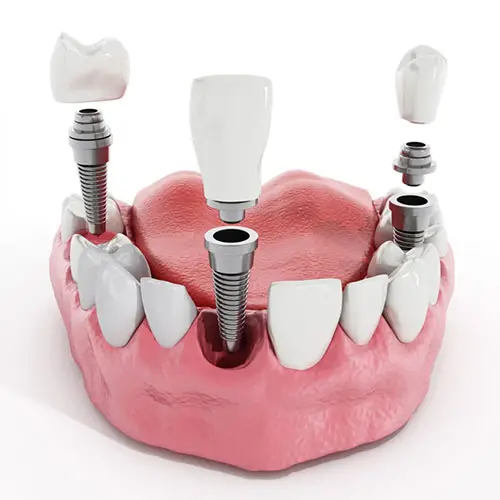Bone augmentation is a routine procedure in dentistry, commonly employed for dental implants and in periodontal treatments around natural teeth. To conduct bone grafting successfully, a source of bone is required to fill the deficiency. The optimal bone source is often the patient’s own bone ,typically harvested from other areas of the mouth, such as the chin or the back of the lower jaw. In some cases, bone may be extracted from locations outside the mouth, like the hip. When taken from the hip, this procedure is usually performed in a hospital by an orthopedic surgeon and then transferred to the dentist conducting the implant procedure in the operating theater. For those seeking a less complex albeit slightly slower solution, alternative bone sources that have been specially prepared for safe use in humans are available. Regardless of the source, these materials serve as a scaffold for the formation of new bone. The maturation of new bone can take anywhere from 3 to 12 months before it becomes ready to support dental implants. While this extended timeline increases the overall treatment duration, it significantly enhances the success of implant placement.
Creating Adequate Bone Support:
Bone augmentation is often necessary when a patient lacks sufficient natural bone volume to support dental implants. This procedure helps build up the bone structure, providing a sturdy foundation for the implants.
Enhancing Implant Stability:
Dental implants require a stable and robust foundation to integrate effectively with the jawbone. Bone augmentation ensures that the implant site has enough bone density, promoting stability and reducing the risk of implant failure.
Optimizing Aesthetic Outcomes:
In addition to functional considerations, bone augmentation contributes to improved aesthetic outcomes. Adequate bone support helps in achieving a natural-looking and harmonious appearance of the implanted teeth.
Utilizing Autogenous Bone:
Autogenous bone, sourced from the patient’s own body, is often preferred for augmentation. This type of bone grafting ensures compatibility and reduces the risk of rejection or complications.
Addressing Bone Deficiencies:
Bone augmentation is particularly valuable when there are localized deficiencies or irregularities in the jawbone. It allows the dentist to address specific areas that require additional bone volume for successful implant placement.
Expanding Treatment Options:
Patients with compromised bone structure may have limited options for dental implant placement. Bone augmentation widens the scope of possibilities, making dental implants viable for a more extensive range of individuals.
Supporting Various Techniques:
Bone augmentation supports different dental implant techniques, including sinus lifts, ridge expansions, and grafting procedures. This versatility allows for customized approaches based on individual patient needs.
Improving Long-Term Implant Success:
Adequate bone support created through augmentation is a key factor in the long-term success of dental implants. It enhances osseointegration, the process of the implant fusing with the surrounding bone, promoting stability and durability.
In summary, the role of bone augmentation in dental implants is pivotal for establishing a solid foundation, ensuring implant stability, and achieving both functional and aesthetic success in the long term. This procedure expands the possibilities for patients seeking reliable and lasting solutions for tooth replacement.


